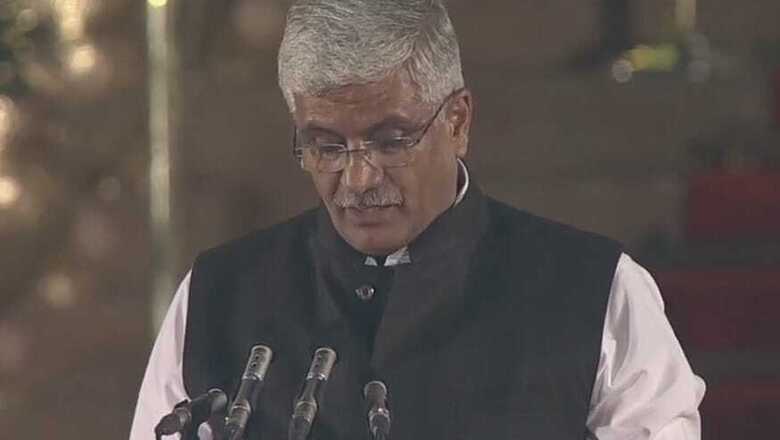
views
New Delhi: Ground water levels in various parts of the country are declining because of continuous withdrawal and 1,186 blocks have been categorised as 'over-exploited', Lok Sabha was informed on Thursday.
Union minister for Jal Shakti Gajendra Singh Shekhawat also said as announced in the Union Budget, it has been envisaged to ensure piped water supply to all rural households by 2024 under the Jal Jeevan Mission.
"Ground water levels in various parts of the country are declining because of continuous withdrawal due to reasons such as increased demand of fresh water for various uses, vagaries of rainfall, increased population, industrialisation and urbanisation etc," he said during Question Hour.
Shekhawat said the Central Ground Water Board is periodically monitoring ground water levels throughout the country on a regional scale, through a network of monitoring wells.
The minister said the dynamic ground water resources of the country are being periodically assessed jointly by the Central Ground Water Board (CGWB) and state governments.
"As per the 2017 assessment, out of the total 6,881 assessment units (Block/ Taluks/ Mandals/ watersheds/ Firkas) in the Country, 1,186 units in 17 states and union territories have been categorised as 'over-exploited' where current annual ground water extraction is more than annual extractable ground water resource," he said.
Shekhawat said as announced in the Union Budget, it has been envisaged to ensure Har Ghar Nal Se Jal (piped water supply) to all rural households by 2024 under the Jal Jeevan Mission.
This programme, under the department of drinking water and sanitation, will focus on integrated demand and supply side management of water at the local level, including
creation of local infrastructure for source sustainability like rainwater harvesting, groundwater recharge and management of household wastewater for reuse in agriculture.
The minister also said drinking water supply is a state subject and under the National Rural Drinking Water Programme (NRDWP), the Department of Drinking Water and Sanitation supplements efforts of states for improving the coverage of drinking water in rural areas of the country.
As reported by States on Integrated Management Information System, out of total rural population of 9182.58 lakhs, 7001.50 lakhs population (76.25 per cent) are
fully covered (i.e. getting more than 40 litres per capita per day safe drinking water) and 1815.66 lakhs population (19.77 per cent) are partially covered (i.e. getting less than 40 litres per capita per day safe drinking water) as on July 7, 2019.
Hence, 96.02 per cent rural population has access to drinking water in villages, he said, adding availability of drinking water in rural areas is affected by many factors which include, depletion of ground water level, contamination of surface water sources, drying up of ponds and wells, increase in population, deficient rainfall leading to insufficient recharge of water bodies etc.


















Comments
0 comment